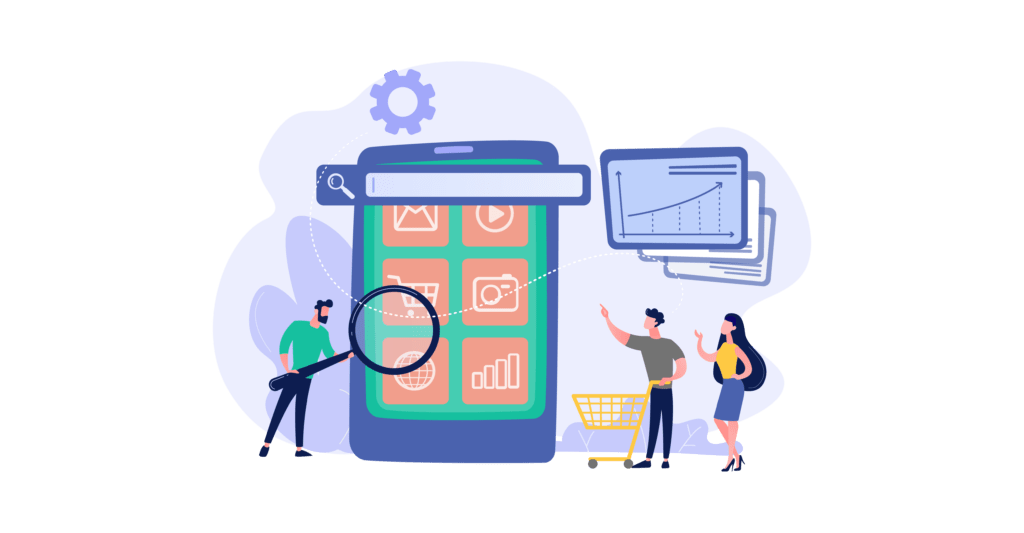The rise of Ecommerce: Navigating through online transactions
E-commerce, or as you may have heard E-business, electronic commerce, internet commerce are all essentially the same thing. The term refers to both businesses and people that purchase and sell goods, products or provide services through the internet. E-commerce also includes transactions of money, funds, and data.
Today, almost everyone on the planet uses Ecommerce in one way or another. You can purchase or sell anything online if you have either a smartphone, laptop, computer, tablet, or basically any smart device. It’s the 21st century, everything you can imagine and more is available on the internet, from watching movies, reading books, purchasing concert tickets, investing in stocks etc.
There are six types of Ecommerce business transactions: B2B (Business to business), B2C (Business to consumer), B2G (Business to government), C2C (Consumer to consumer), C2B (Consumer to business) and lastly C2G (Consumer to government).
Table of Contents:
- Evolution of Ecommerce
- Impact of COVID-19
- Artificial Intelligence (AI) in Ecommerce
- Virtual Assistants (VA)
- Challenges and disadvantages
- Benefits and advantages
- Conclusion
Evolution of Ecommerce
With all of the information and context provided in the introduction of this blog, I think it is obvious why Ecommerce is considered to be a disruptive technology. If you are unfamiliar with this term, according to Cambridge Dictionary, it is a new technology that completely changes the way things are done.
Back in the day, it seemed very unlikely, or better to say unthinkable that all of these transactions would be possible to achieve via the internet. If I went back in time to when my grandma was my age, to explain to her that I can buy my plane tickets using a small screen type of thing that I call a smartphone, she would most likely think I’m crazy. Which is probably what all of you will think when I tell you that Ecommerce was a thing even before the internet. According to a blog I read on Shiprocket, in the 1960s, businesses started to implement an electronic technology known as Electronic Data Interchange (EDI) to help with transferring documents. Even though that may not be considered Ecommerce today, everything has to start somewhere, right?
In 1991 the internet became accessible for consumer consumption, but the online business craze started in the early 2000s because that is when protocols for security such as HTTP and digital subscriber lines were put into effect, they made the internet transactions safe.
Impact of COVID 19
I think it is safe to say that COVID 19 had a huge impact on all of humanity in many different aspects. It forever altered the way that we live our day to day lives. It certainly had a huge effect on Ecommerce as well. Corona virus destroyed many small but also large businesses, traditional ones. The business on the internet was flourishing.
Everyone was always at home ordering things like food, groceries, clothes etc. Some people still avoid going to public places ever since the pandemic, it has been four years since then yet it completely changed the way that they used to shop. Ecommerce sales increased by $244.2 billion or 43% in 2020, the first year of the pandemic, rising from $571.2 billion in 2019 to $815.4 billion in 2020.

Artificial Intelligence (AI) in Ecommerce
As the years go on, trends come and they go. Sometimes they fly by fast but sometimes they stick around or come back from time to time. Ecommerce is highly competitive so you have to always stay ahead.
One of the biggest trends has to be Artificial Intelligence or AI for short. AI is taking over the world by storm and ecommerce is one of the fields that it has also found its way to. It can be used in all sorts of ways, like making customer service better and adjusting marketing communication.
Everyone knows that personalization in ecommerce is very important, but now it can also be done by using artificial intelligence. To develop an extensive in depth consumer view, the AI engine keeps track of all devices you may be using.
Virtual Assistants (VA)
If you are a business owner you know how much responsibilities you need to fulfill on a daily basis. Having an eCommerce virtual assistant allows you to focus on your most important duties without being concerned that you are forgetting something. They can do anything from receiving orders and customer support to product listings, handling inventory, and market analysis. Businesses can use their knowledge to speed up growth, improve client satisfaction, and accelerate all procedures. Researchers discovered consumers trust virtual assistants and really like using them.
Conversational commerce is an emerging digital purchasing concept that has proven to be quite successful. It’s occasionally referred to as conversational marketing or chat commerce. Online companies use this e-commerce method for selling their products and services through interaction. They only work well if your conversation with a consumer is personalized, in that way you make up for the fact that the transaction is online and there isn’t any physical interaction.
Challenges and Disadvantages
No, Ecommerce is not perfect, and definitely has some limits to it. Let’s discuss the most common problems.
Yes, the pandemic did change the way that we shop but there are still plenty of people that like doing things the old way. Going shopping is a whole experience and you don’t get it by just clicking on a product on your screen and it being delivered in a couple of days. Even though you do see a video of a model trying on the shoes that you like, when you are purchasing something online there is no way of trying it on and knowing if they fit or not.
Not to mention that it isn’t always safe for you to put your credit card information on different sites. Frauds have become very common and a lot of individuals don’t feel comfortable shopping online because of it, which is completely reasonable.
Benefits and Advantages
Ecommerce is rapidly growing and evolving through the years, you never know how many advantages may rise as the time passes.
It is much more practical than physical shopping. You don’t have to actually stand up from your bed, leave the house, get into a car and travel for who knows how long to go buy something that is actually a click away. Just grab your phone and order whatever you want whilst never leaving the comfort of your own home.
It is also much more likely that the product you are searching for is available online and not in an actual store. Another advantage is that you can get what you want at a reduced cost. Online retailers offer greater discounts, deals and promotions.
Conclusion
To summarize, the rise of eCommerce has changed the way we transact, buy items, and engage with businesses. From starting out small with technologies such as Electronic Data Interchange (EDI) to the universal use of buying and selling sites, electronic commerce has grown into an important part of today’s business.
Considering all of these drawbacks, the positive aspects of e-commerce are evident. It provides outstanding accessibility and convenience which allows customers to purchase from anyplace and at any time they want. Electronic commerce has already altered the way that businesses work and in the future it will keep doing so.





